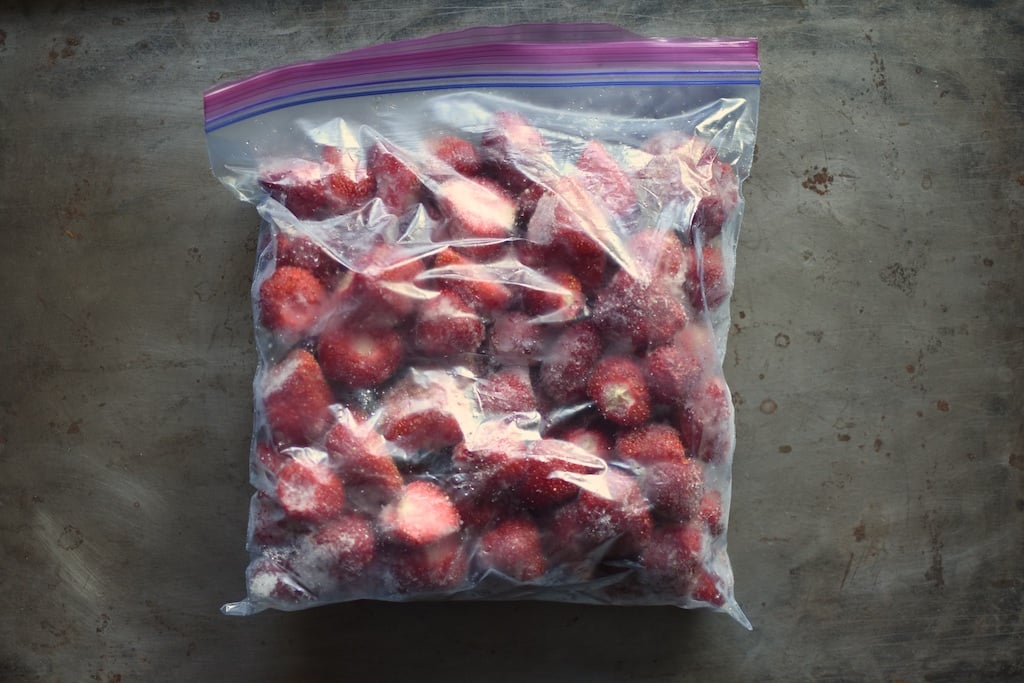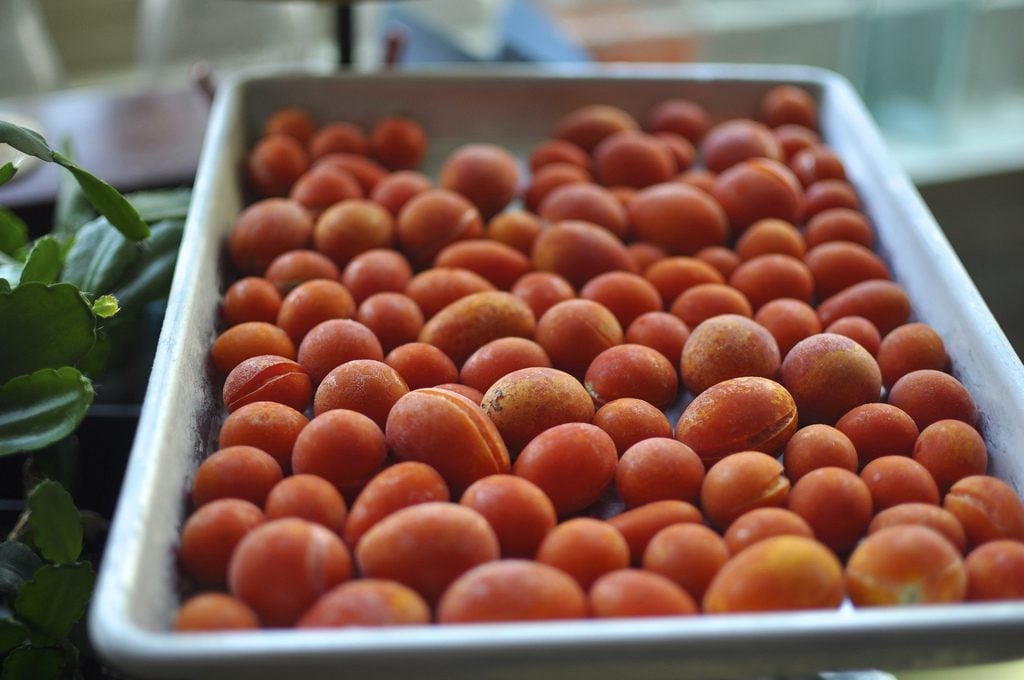How to Can Frozen Fruit – Food in Jars
Looking to learn more about how to can frozen fruit for the February Community Canning Challenge? Continue reading for some helpful advice!

The February Community Canning Challenge is to gather up your frozen fruit and get it out of the deep freeze and transform it into something that is delicious and ready to use. I’m not suggesting that you gather up all your smoothie ingredients and turn them into jam, but instead go for the things that you tucked away during the height of the summer growing season with the intention of doing something with it later. That later is now!
I have two things in my freezer that I plan on tackling this month. The first is an eight cup tub of tomatoes that I chopped back in August intending to make tomato jam. I never got around to jamming them, and I’ve decided that they will serve us better as pizza sauce, so that’s what I’m going to do (look for that early next week). I also have a bag of apricot halves from last June. Those are destined for a batch of this Apricot Meyer Lemon jam that I first posted almost exactly 9 years ago.


So, let’s get into the nitty gritty of transforming frozen fruit into delicious jams, butters, and sauces. It’s a pretty straight forward process, but there are a few things to take into account. The first is understanding what freezing does to fruit. When you take fresh fruit and freeze it, the water content in the fruit turns into ice crystals. Those ice crystals expand as they form (because ice is a solid that takes up more space than water does when it is in its liquid form) and they break apart the cell walls of the fruit.
This isn’t a big deal while the fruit remains frozen, but it is why frozen fruit weeps so much liquid when you defrost it. The cell walls are no longer intact and so they can’t hold that liquid in place. Often, the temptation will be to drain that liquid away, but I prefer to include it in the preserving process. I find that if you omit the the water that weeps out from your frozen fruit, your product can end up overset or without the right consistency because the cooking time was altered. This isn’t the case with all things (if you are making tomato paste for instances, draining the tomatoes before cooking might be the right choice), so use your judgment.


Another pitfall that happens when you’re working with frozen fruit is that it can oxidize during the defrosting process. If this happens, the fruit ends up turning brown and developing an off flavor. If you are making something that includes sugar, there is an easy fix for this issue. Sugar the fruit while it is still frozen. The sugar helps prevent the oxidation from taking place and leaves you with a higher quality product in the end. If you aren’t adding sugar to your fruit, another solution is to defrost it slowly in the fridge rather than quickly on the countertop or in a bowl of warm water. The gradual defrosting can reduce the amount of discoloration that you experience.


Good Recipes for Using Frozen Fruit
When you choose a recipe for transforming frozen fruit, your best bet is to look for those that use weight rather than cups as the starting measurement. That’s because frozen fruit is unwieldy and it is going to be a whole lot easier to just put your pot on the scale, zero it out, and plop the frozen fruit directly into the pot. Trying to measure defrosted fruit in cups is messy and not super accurate.
Tomato Jam – This is one of the most beloved recipes on this site. If you’ve got a cache of frozen tomatoes and you like this sweet and savory spread, know that it works very well with frozen tomatoes. It starts with five pounds of tomatoes, which will help clean out the freezer nicely.
Slow Cooker Peach Butter – This recipe will work for any stone fruit you’ve got kicking around in your freezer (peaches, nectarines, apricots, plums, and cherries all spring immediately to mind). If you do choose to make this with you frozen fruit, this is a situation where you want to let your fruit fully defrost in the fridge with the bag/container sealed the whole time. When you go to puree the defrosted fruit, add your lemon juice with the fruit. This will help buffer against any oxidation.


Cherry Blueberry Jam – If you don’t happen to have a stash of blueberries and cherries in your freezer, this is a recipe that could be made with store bought frozen fruit with no sacrifice to the finished product. No matter what fruit you’re using, this is a situation in which I would put the frozen fruit directly into your cooking pot and add the sugar on top. Once it is defrosted, stir the sugar into the fruit, add the remaining ingredients and proceed with the recipe.
Mixed Berry Jam – When I made this jam for my partnership with Ball, I used frozen fruit. The finished product was absolutely delicious. All the guidance for using frozen fruit is already baked into the blog post.
Pear Vanilla Caramel Sauce – A highly flexible recipe, you can make this caramel sauce with a variety of fruit purees. So dig into your freezer and look for things like pears, strawberries, peaches or mango. Defrost in the container in the fridge to prevent oxidation and proceed with the recipe.
Hopefully those suggestions give you an idea of where to start. Let me know if you have questions and enjoy the opportunity to clear out your freezer!

